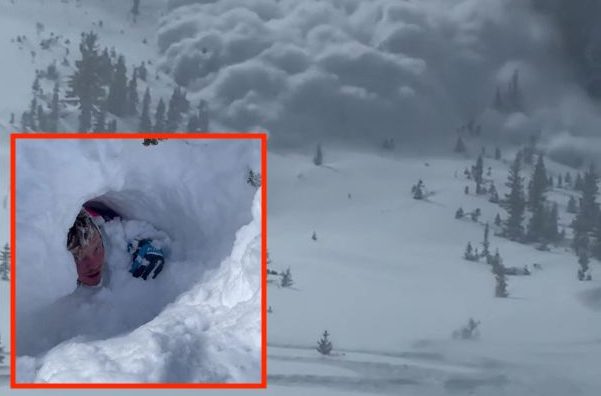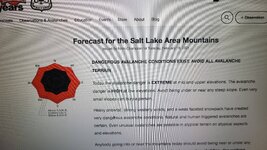Thanks for sharing... scary stuff!
Remember, it's not always the slopes you're on, but can also be the slopes you're underneath. This is especially true this year, as most western states are dealing with a Persistent Avalanche Problem and Remote Triggers are real and happening.
How do you know if you are clear of overhead hazard? Measuring your Alpha Angles is a relatively quick and easy way to get an idea if you are exposed to overhead hazard while ripping around the flats. Alpha angles can vary depending on the type of avalanche problem you're dealing with, but if you just remember 20 degrees or less, that will keep safe from nearly all overhead avalanche hazards.
How do you measure Alpha Angles? There are sever tools you can use such as a compass with an inclinometer or a specific
slope angle tool like BCA sells. Personally, I like to use my phone. On my iPhone, in the Utilities App I select the Level function, then holding my phone on edge I sight down the long edge from my position to either the top of the peak/ridge/bowl or where I think the start zone of an avalanche might be. This will give me a number on the screen and if I'm seeing anything greater than 20* then I know that I'm potentially exposed to an avalanche on that slope.
This doesn't have to be cumbersome and take a lot time. When I'm out for a day with a group, we have decided ahead of time what type of terrain is appropriate for the current conditions (non avalanche, simple, challenging, or complex). We've also picked a few spots to stop, regroup and reassess conditions and check in with each rider. Braaaping into a new zone is a good time to do this. If you're dealing with a Persistent Slab problem and the local avalanche bulletin is warming of remote triggers, I'll pull out my phone, shoot a couple alpha angles and set some boundaries on where we think it's safe to ride and terrain that should be avoided.
Read the local forecast. Know what to look for. Know what to avoid. Communicate with your group. Play safe and come home at the end of the day! I'm huge proponent of avalanche education, not only because I'm an instructor, but also because I believe that you'll never achieve your potential as a rider if you know nothing about winter mountains and avalanches.
If you're near Central Idaho I've got another
Motorized Level 1 Course coming up Feb 5-7.
We've got a storm rolling into our zone this week (finally!!!). We're currently dealing with a stubborn Persistent Slab problem with a buried facet layer anywhere from 40-80cm down from the snow surface. We've also noted widespread surface hoar on nearly all aspects and elevations. The potential is there. Things could get pretty real here by the end of the week if we receive the 1.5-2' of snow they are forecasting!






